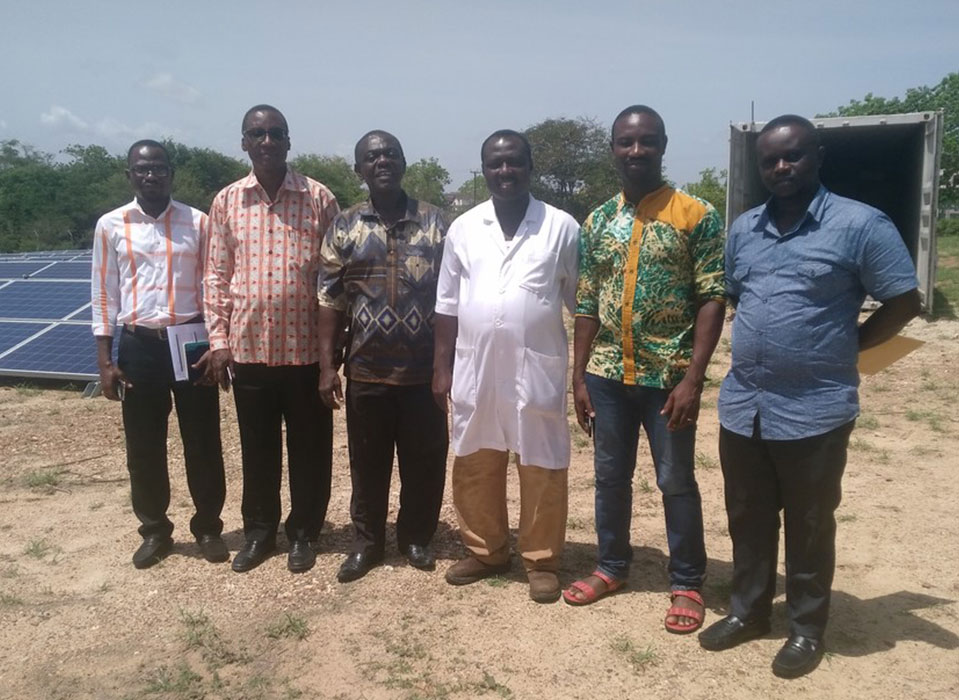By CEO Erwin Spolders
Increasingly, we live in a sharing economy; rather than owning hardware, users pay to access it flexibly. We see this trend with everything from vacation homes (airBnB) to cars (Uber), and this same principle can be applied to solar power.
Traditionally solar energy deals occur either as an outright purchase under an EPC contract or as a Solar Power Purchase Agreement (PPA). These PPAs contracts are rigid, long-term contracts, selling the solar electricity of a fixed, stationary solar farm to a single consumer over the useful life of the solar farm, typically with a term of 15-25 years.

With a solar farm rental agreement however, solar farm equipment is rented to a lessee for a shorter period. Rather than owning the solar farm, the user pays to access it flexibly. Operationally, the solar farm is designed and deployed to be physically moved several times during its entire useful life.
Here are five ways the commercial and industrial segment in emerging markets in Africa can benefit from the flexibility of solar farm rental agreements, especially vs. PPAs:
- Flexible Term Contracts: Solar farm rental agreements make pay-as-you-go solar accessible to companies who need flexibility. For example, mining companies which may have remaining mine lives ranging 5-10 years cannot sign 15-25 year PPAs. Rental solar farms open up the benefits of solar to these types of customers.
- Risk Mitigation: Redeployable solar farms mitigate both offtaker and country risk effectively. Using REDAVIA’s technology, redeployment is operationally easy; we have used this feature several times to remobilize solar farms after lessee default and/or adverse developments in country risk. In REDAVIA’s case, redeployment is not a problem, so if the economic basis for solar energy use has ceased to exist for part or all of a solar farm, redeployment can be a clear win-win, for both REDAVIA and the lessee.
- Increased Access to Solar Finance: Through operational risk mitigation, REDAVIA can secure lower-cost funding than a PPA-based player, especially for smaller offtakers and/or riskier geographies. Rental solar makes solar accessible to small and medium-sized enterprises and communities which would be considered too risky for a project-financed-PPA approach.
- Long-Term Asset Value Maximization: Given customers’ inability to sign up to an offtake obligation for more than 7-10 years, many PPA’s are under pressure to become shorter and shorter term. Under these short-term PPAs, the “out-years” of electricity production beyond 10 years are usually considered of no or very little value, because if the solar farm cannot be economically moved, there may be no one to pay for the electricity generated in those years. With rental solar, the solar farm can be moved to the most optimal offtaker, virtually ensuring someone will pay for the electricity over the whole life of the solar farm.
- Regulatory Simplicity: Rental solar is considered self-production of electricity, which typically falls outside utility monopoly regulations. From a regulatory standpoint, it’s as easy as renting a diesel generator. By contrast, even PPA’s for small co-located solar farms typically fall under the permitting regime of large scale fossil-fuel power generation plants, placing an unnecessary and uneconomic regulatory burden on distributed solar.
In conclusion, solar power has proven the value it can add to the sharing economy. The rental solar farm model has significant benefits, especially for on-site solar farms in the commercial and industrial sector in higher-risk countries.
